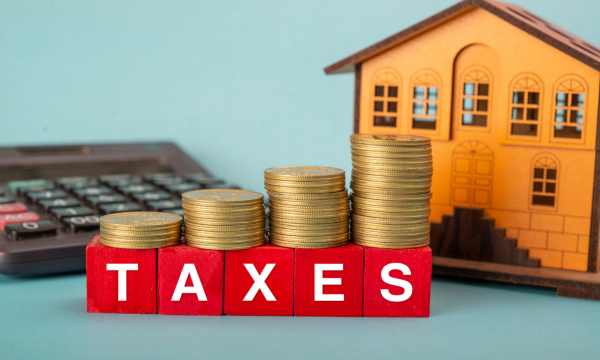Federal Tax Credits: Your Guide to Savings
Tax credits are an important part of understanding how the complex world of federal taxes works.
Tax credits are useful because they can significantly reduce your tax bill, allowing you to keep more of your hard-earned money.
This guide tells you everything you need to know about federal tax credits, including what they are, what different types there are, and how to use them to save the most money.
Quickly Learn How to Understand Federal Tax Credits:
Federal tax credits are incentives given by the U.S. government to people who do certain things that are good for society.
Tax credits directly reduce the amount of tax you owe, while deductions reduce the amount of income you are taxable on. In a sense, they reduce your overall tax bill by the same amount.
Different Types of Federal Tax Credits:
- Earned Income Tax Credit (EITC): The EITC is a refundable tax credit designed to help working people and families with low and moderate incomes. The amount of credit you get depends on your income, how you file your taxes and how many qualifying children you have. For eligible taxpayers, large refunds are available under the EITC.
- Child Tax Credit (CTC): The Child Tax Credit provides a tax credit of up to $2,000 for each qualifying child under age 17. You can get a credit and the amount depends on how much money you earn and how many children you have. The Tax Cuts and Jobs Act (TCJA) increased income limits for families, making it easier for them to qualify for the CTC.
- American Opportunity Tax Credit (AOTC): The AOTC provides a credit of up to $2,500 toward qualified college expenses for the first four years of each eligible student. To qualify, students must be working toward a degree or other recognized credential and meet certain entry requirements.
- Lifetime Learning Credit (LLC): The LLC offers a tax credit of up to $2,000 per tax return for qualified education expenses. The AOTC has a limit on the number of years you can file for an LLC. Limited liability companies do not do that. This credit is especially useful for college students, part-time students, and people who take classes to learn something new.
- Renewable Energy Credit for Homes: With this credit you can pay for the installation of solar panels, solar boilers, geothermal heat pumps, small wind turbines and fuel cells in your home. This allows you to recoup up to 26% of the costs of certain types of land. Participation requirements and credit rates are different for each type of renewable energy.
- Premium Tax Credit (PTC): This credit allows eligible low- and moderate-income individuals and families to pay for health insurance through the Health Insurance Marketplace. The goal is to lower monthly premiums so that more people can afford health insurance.
- Saver’s Credit: People with low and middle incomes can receive a savings credit, also known as a pension savings premium. With this credit people can save for their pension. You can get this credit if you put money into a retirement plan, such as an IRA, 401(k) and some other types of funds.
Steps to Obtain Federal Tax Credits:
To qualify for federal tax credits, you must pay close attention to the details and keep good records. These are the most important steps you need to take:
- Find Out If You Qualify: Find out the requirements for each tax credit and see if you meet them. Many factors, such as income, filing status, and eligibility costs, are used to determine eligibility.
- Gather the Evidence: Carefully record all the money you spend on things related to the tax credits you claim. This may include documents, invoices, school statements and evidence of energy-efficient home installations.
- Fill Out the Correct Forms: To receive credit, you must use the correct tax forms and schedules. Some tax credits, such as the income tax credit and the child tax credit, have their own forms.
- Double-check that It is Correct: Make sure all the information you provide is correct and current. If errors or inaccuracies occur, it can delay work or even lead to an audit.
- Consider Seeking Professional Help: If you are having difficulty understanding or complying with the tax credit rules, seek the help of a tax professional. A tax professional can help you navigate the complexities.
Conclusion:
Federal tax credits are useful tools that can have a significant impact on your finances. You can save the most money on taxes if you understand the different credits available and follow the eligibility and certification rules carefully.
To take advantage of these tax benefits, stay informed, keep good records, and research the credits that apply to your unique case. Remember, the best way to take advantage of federal tax credits is to understand them and plan ahead.
FAQs:
1. What are federal tax credits and how are they different from deductions?
Federal tax credits directly reduce the amount of tax you owe. They are more powerful than deductions, which simply reduce your taxable income. Tax credits immediately reduce your overall tax bill, making them a valuable money-saving tool.
2. Who qualifies for the Earned Income Tax Credit (EITC) and how much can I get?
The EITC is intended to help low- and middle-income working individuals and families. Eligibility criteria include your income, filing status, and the number of children you qualify for. Credit limits vary based on these factors. For the most accurate information, consult the IRS guidelines or use their EITC Assistant tool.
3. What education expenses are eligible for the American Opportunity Tax Credit (AOTC) and Lifetime Learning Credit (LLC)?
The AOTC covers the first four years of higher education, including tuition, fees and course materials. The LLC covers qualified education expenses for bachelor’s, master’s and professional degrees and courses to acquire or improve job skills. Both credits have specific eligibility criteria, so it’s important to check IRS guidelines or consult a tax professional.
4. Can I claim the Child Tax Credit (CTC) if my child is 17 years or older?
No, CTC is available for children under 17 years old. However, there is a separate credit for other dependents, which older children and certain family members who meet the eligibility criteria can claim. Please refer to Internal Revenue Service (IRS) guidelines or consult a tax advisor for specific details regarding eligibility.
5. How do I apply for the Savings Credit and who is eligible for it?
To apply for the savings credit, you must make a qualifying contribution to a qualified retirement savings plan, such as an IRA or 401(k). Eligibility depends on your adjusted gross income (AGI) and tax filing status. This credit is intended to help people with low and middle incomes save for their pension. Please refer to Internal Revenue Service (IRS) guidelines or consult a tax professional to determine your eligibility and the amount you can claim.
 Demystifying Taxation: A Beginner’s Guide
Demystifying Taxation: A Beginner’s Guide
For many people, especially newcomers, taxes can be difficult and scary to understand. Due to complicated language, […]
More Exploring Types of Taxes: What You Need to Know
Exploring Types of Taxes: What You Need to Know
Taxes are an important part of any society because they finance public services and amenities. Everyone has […]
More Mastering Effective Tax Planning Strategies
Mastering Effective Tax Planning Strategies
Tax planning is an important part of personal and business finance. It involves understanding complex tax laws, […]
More